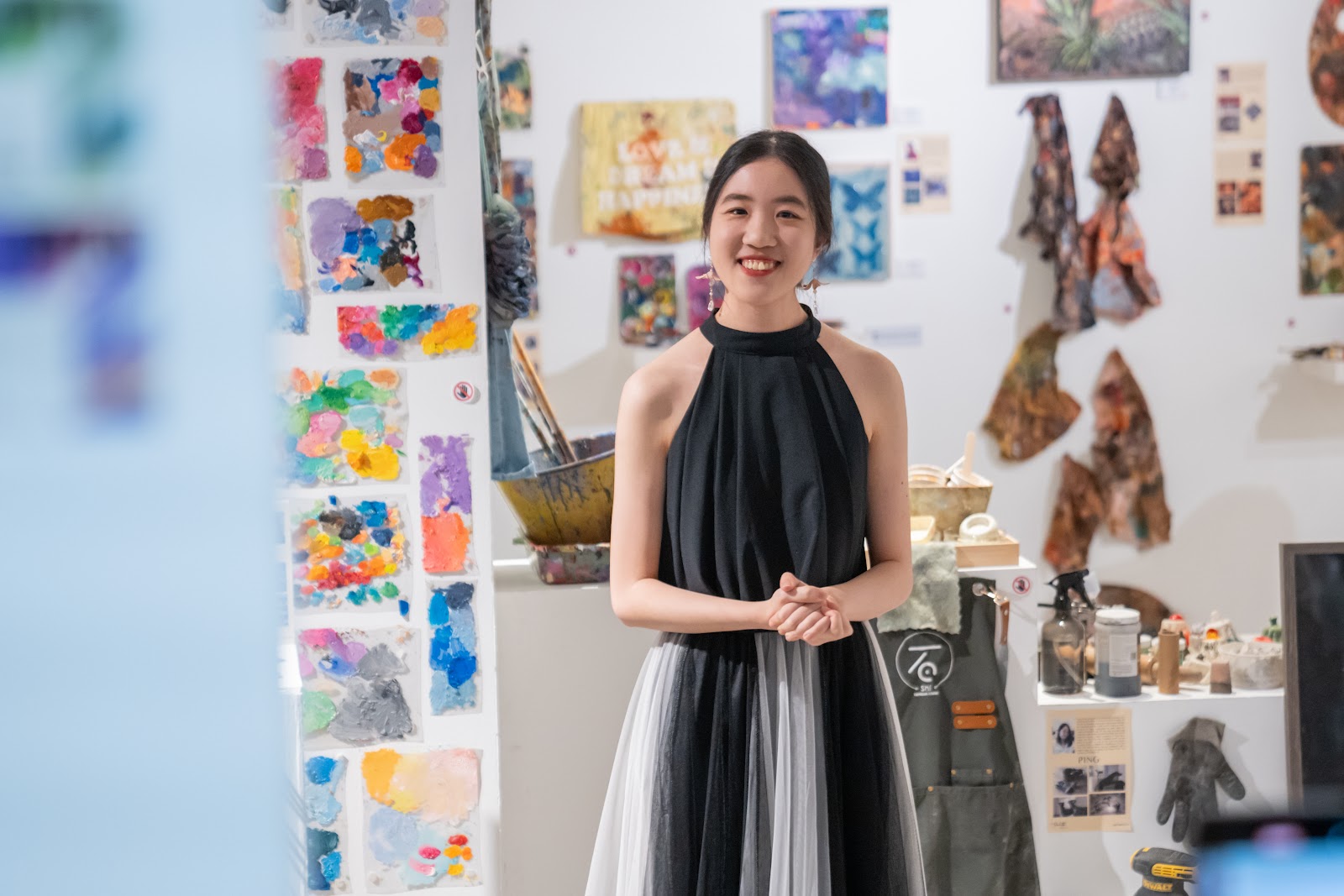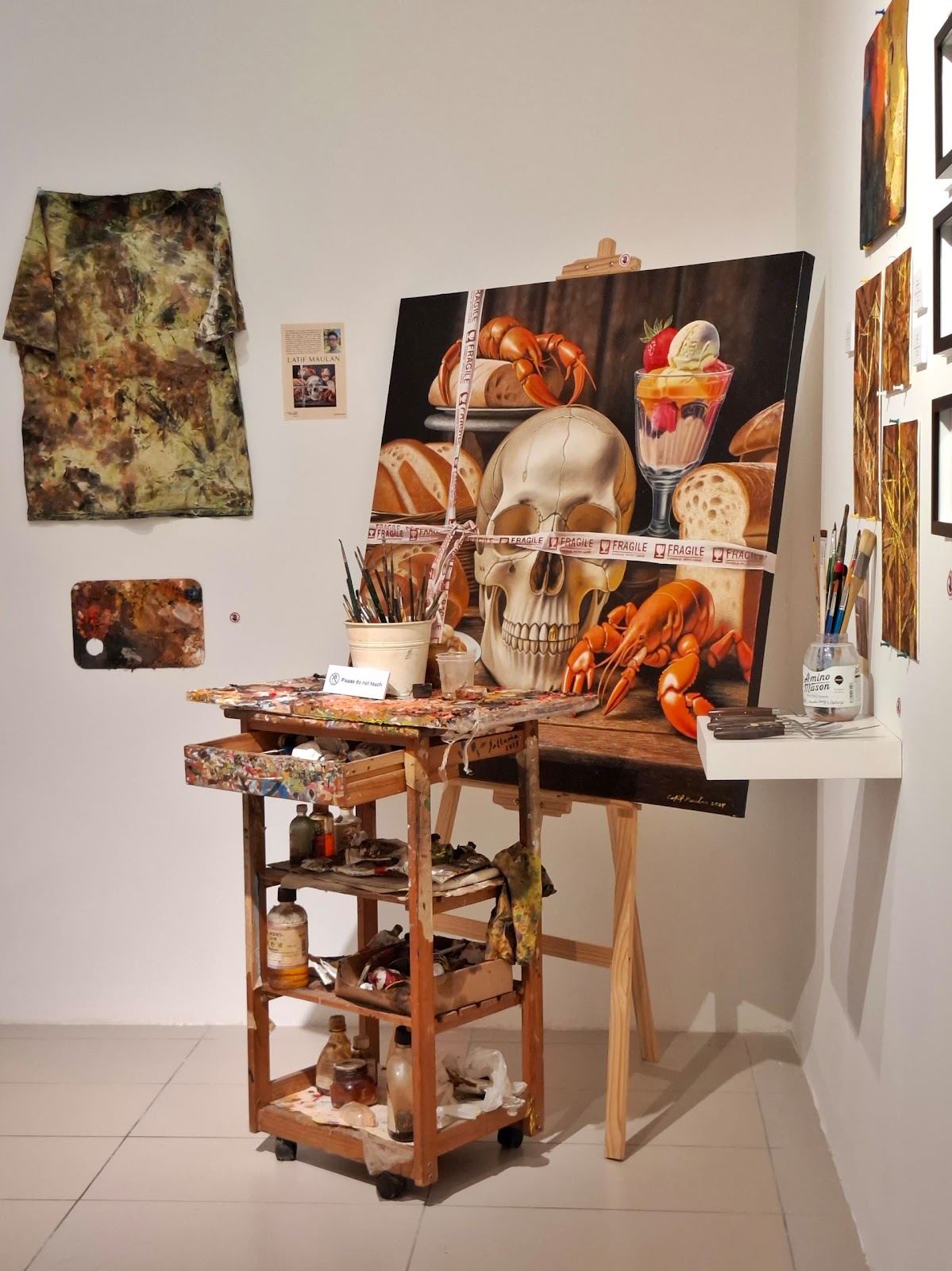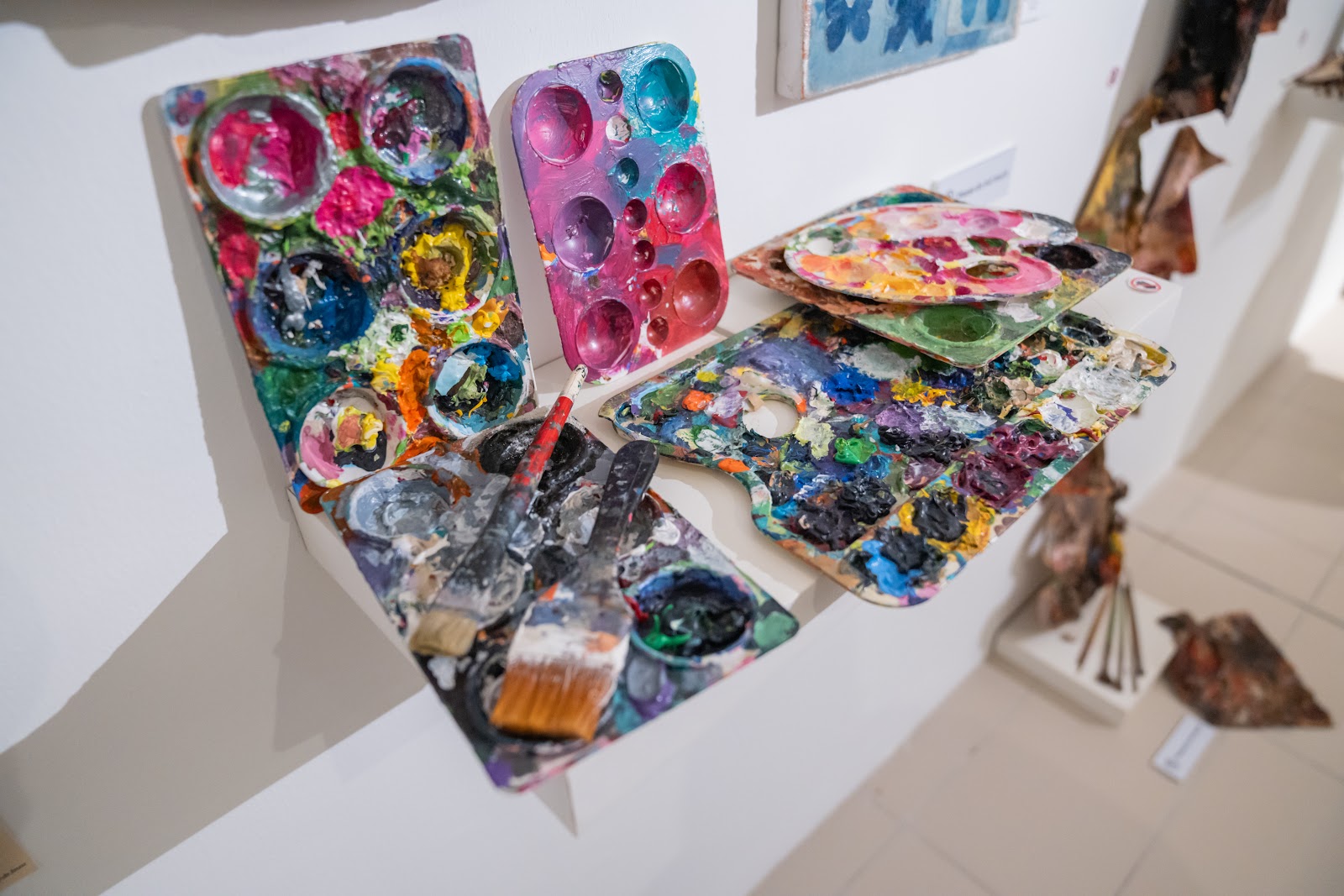Truth be told, I miss visiting exhibitions that break away from the conventional format of paintings neatly hung on white walls. I have always been intrigued by the idea of showcasing the artist’s materials, processes, and workspace—the very essence of creation that often goes unseen. In fact, my own thesis focused more on the artist as a person rather than just the artworks they produce.
So, when Danielle Lin, the curator of The Palette Project, approached me with this concept, I was both excited and thrilled. This exhibition isn’t just another display of finished masterpieces; it’s an invitation to step into the artist’s world. While this isn’t the first exhibition of its kind—one that comes to mind is the Hoessain Enas studio installation at Galeri Ilham—it is still a rarity in the Malaysian art scene. The fact that a young curator like Danielle is championing such an idea deserves recognition.
I may be biased, as I am one of the 55 exhibiting artists, but setting that aside, I’d like to put on my writer’s hat and explore why The Palette Project matters.
Why This Matters?
Art exhibitions often focus on the final, polished pieces—paintings, sculptures, or installations that are framed, perfected, and ready for admiration. While there’s nothing wrong with that, it creates a gap between the artist and the audience. People see the outcome but rarely the journey. They marvel at the intricate brushstrokes, the harmony of colors, or the depth of emotions but may not consider the layers of trial and error, the frustration, the moments of self-doubt, and the decisions that led to that final piece.
By showcasing palettes, sketches, and tools, The Palette Project pulls back the curtain on the creative process. It humanizes the artist, allowing visitors to witness their thought process and experimentation. It breaks the myth of effortless genius—art is not just about raw talent but also persistence, exploration, and sometimes even happy accidents.
Moreover, in today’s fast-paced digital age, where we are constantly bombarded with finished images on social media, an exhibition like this serves as an important reminder that art is not just about the result—it’s about the journey. Seeing an artist’s palette, marked with layers of dried paint and messy smudges, tells a story just as much as the artwork itself.
A Bold Curatorial Move
It takes courage to organize an exhibition like this, especially in a scene where many galleries prefer conventional showcases. Not all galleries are willing to take a chance on experimental curatorial concepts, and as business entities, their hesitation is understandable. However, when a gallery does support such an idea, it deserves acknowledgment. Exhibitions like The Palette Project enrich the art scene by broadening the way we engage with art, shifting the focus from just admiration to understanding.
Challenges in Curating Such Shows
Curating an exhibition that focuses on process rather than product comes with its own set of challenges. One major hurdle is the perception of what is considered “exhibition-worthy.” Many galleries operate under the assumption that visitors come to see artworks—not the tools used to create them. The idea of exhibiting palettes and sketches may seem unconventional, and convincing galleries to take a chance on such a concept requires persistence.
Another challenge is logistics. Unlike paintings, which can be easily displayed on walls, palettes and tools require a different kind of presentation. Should they be framed? Placed in glass cases? Left in their raw, untouched state? The way they are exhibited can significantly affect how they are perceived. If not done thoughtfully, there’s a risk of them looking like random discarded objects rather than meaningful artifacts of the creative process.
Then there’s the challenge of artist participation. Not all artists are comfortable revealing their process. Some may feel their unfinished works or used palettes are too personal, too messy, or not meant to be seen by the public. It takes trust between the curator and the artists to encourage them to share these behind-the-scenes elements of their practice.
A Step Forward for the Art Scene
At its core, The Palette Project is more than just an exhibition—it’s a statement. It challenges the traditional format of art displays, encourages audiences to engage with the creative process, and sparks conversations about what we consider to be “art.” More importantly, it fosters a deeper appreciation for the labor, experimentation, and dedication that go into every artwork we see.
I hope this exhibition inspires more curators and galleries to embrace similar concepts in the future. After all, art is not just about the final image—it’s about the journey that brought it to life.
If you have spare time over the weekend, please visit The Palette Project at GMBB, Lot GM1-30. The exhibition is on display until March 9th.









Comments
Post a Comment